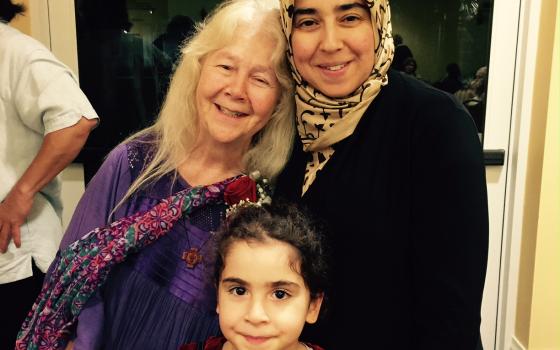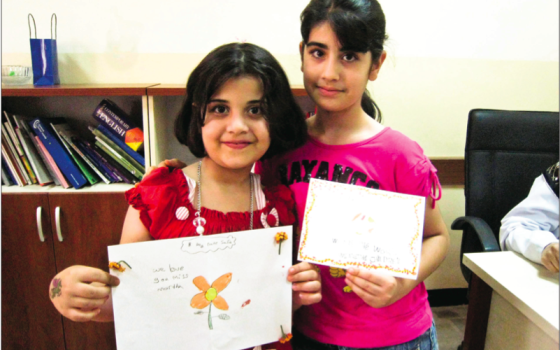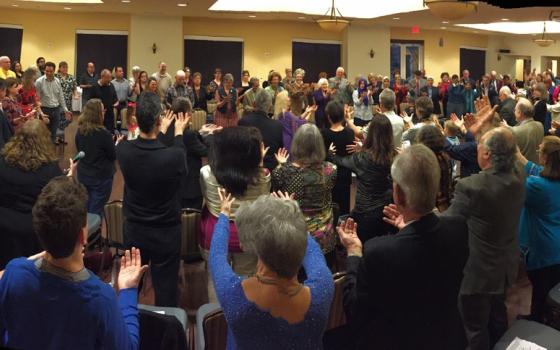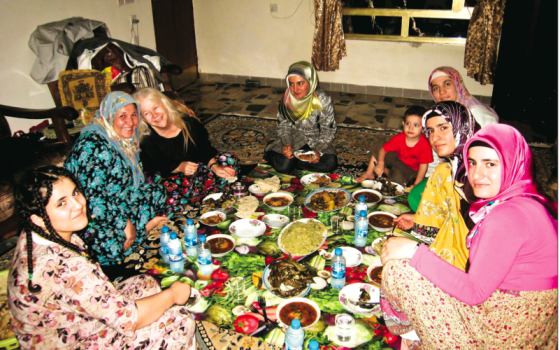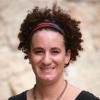Sr. Martha Ann Kirk, a sister of the Incarnate Word, has spent years on the road, researching pockets of tolerance in hostile parts of the Middle East. Her research has brought her to Iraq, Iran, Turkey, Jordan, Israel and Palestine, as well as China and the halls of the United Nations.
She is a professor of religious studies at the University of the Incarnate Word, San Antonio, Texas, and a prolific author. Kirk has written more than a dozen books, including Women of Bible Lands: A Pilgrimage to Compassion and Wisdom, an interfaith guidebook to the Middle East specifically for women. Global Sisters Report recently caught up with Kirk to hear more about her work building bridges between religions through art, dance and even computer screens.
How did you get involved with interfaith work?
I grew up in a very small town in South Texas with only about 6,000 people. My father was a Southern Baptist, and my mother was a Roman Catholic. At that time, the Southern Baptists thought the Roman Catholics were awful and condemned by God, and the Roman Catholics thought the same about the Baptists. But seeing my own parents, I knew that people could be of different faiths and approaches [and still love each other].
While I was working on a master’s degree in art history and art education, I was studying Native American and Buddhist and Hindu art, and art from around the world, as well as Islamic art and Jewish art. I was confronted with not being able to do well in art history classes if I didn’t know more about the religious traditions themselves. In 1972 I started teaching art and art history classes at the Incarnate Word College, when a sister professor went to the leadership team and I was suddenly grabbed to teach a religion class.
Your work often marries religion and art, including dance and art therapy with children. Why do you approach your interfaith work through art?
I grew up taking 10 years of ballet, modern dance, tap and acrobatics. When I entered the convent, people said, “Oh, how awful, you’re not going to dance again, you’re going to wear long black nun dresses and live a rigid life.” I started interpreting the Bible in dance at the 100th anniversary of our sisters in 1969.
When I taught my religion classes, I brought this idea that we were going to interpret the Bible in dance and drama, and we are going to look at the great artwork that has religious themes. In 2007 I was on a trip to Jordan [after a sabbatical in Israel, studying at the Tantur Ecumenical Institute] and I was visiting a Melkite Catholic Church in Amman, and an art educator from Boston asked the priest if they could start an art program for Iraqi refugee children in the basement. I would call it an art therapy center, not just an art center, because at the time they were getting very traumatized young children who were refugees.
When I came back to San Antonio at a faculty party, I had a children’s art corner and I would show the children, “here are some of my children friends who are Iraqi; they live far away, but why don’t you make some pretty pictures and I will send them to them. We can be friends with each other.” We exchanged pictures so that children from Texas and Iraq could see each other’s artwork [part of the Iraqi Children’s Art Exchange]. It’s a lot of fun!
What role do you think technology can play in interfaith dialogue?
Like the children’s art exchange, I wanted to take this to a university level, because I want my students to have some type of encounter with people of other faiths online. I had a graduate research assistant who had been in Cairo for a while and he knew some people teaching English in Cairo through the Fulbright program. He contacted the teacher at Al-Azhar University in Cairo and said, ‘Would your students like to practice their English and be in dialogue with students from San Antonio, Texas?’ We made the contact, and we had a wonderful dialogue.
Another semester, there was an English teacher in Dubai who put out an invitation to students anywhere in the world for online dialogues. So we had one semester of dialogues with Egyptian Muslims and one semester with Dubai Muslims. There were fantastic things being posted on the blog with this spontaneous writing, like, ‘Tell us about your family’s favorite religious holiday and what you do.’ My students were learning about Eid and Ramadan, and they were learning about Christmas and Easter.
How did you start traveling to Muslim countries for research?
My work with Turkish Muslims began in 2005 when I was invited to a friendship dinner in San Antonio, which was an interfaith dinner hosted by Turkish Muslims for Hindus, Buddhists, Jews and Christians around the city. In 2007 they invited me on an interfaith tour of Turkey. I was skeptical, trying to figure out, ‘What’s the hook, why are these people driving us around Turkey and putting us up in hotel rooms?’
But I am so impressed with Turkish Muslims of the Gulen Institute who have this emphasis on interfaith dialogue. Their basic philosophy is that you make friends with one individual and another individual and you all listen to each other. We can differ on political points of view and we can differ on religion but, as human beings, let us start on common ground. Can we find common ground that we need to help give poor people jobs? Can we find common ground that all children need basic education?
They also sponsor research trips. They asked me, ‘Would you like to go to the southeastern part of Turkey?’ because there has been a lot of terrorism and violence there, and the Gulen Movement group has tried to start a tutoring center for children traumatized by violence. They believed that young people would not drop out of school to go join the terrorists in the mountains if in school they learned to respect people and get an education for good careers that would help them get out of poverty. I wrote a book Growing Seeds of Peace about this work.
Then I was standing by a road in a tiny village in Turkey, and the man says, ‘If you think they’re doing good work here, you should go 100 miles down the road into Iraq and you should see the kind of work Turkish Muslims are doing in Iraq.’ So I went to Iraq in 2008, 2009 and 2010. I interviewed 140 people in Iraq. I worked with Sr. Patricia Madigan, Ph.D., and we wrote a book of our research, Iraqi Women of Three Generations: Challenges, Education and Hopes for Peace.
So how did you end up traveling to Iran?
I have been at a number of academic conferences for education and curriculum. In 2010 I went to a conference in Iran to present my paper about my students talking to Muslims in Cairo and Dubai. The paper was called “Interfaith Online Exchanges Further Muslim-Christian Dialogue.” That conference in Teheran was very interesting as it was the first time I was with Shia Muslims.
Most of the Muslim contact I’ve had has been in Turkey in relation to the Gulen movement, which is Sunni, with a Sufi approach of ‘God loves every creature, every thing in the world, and the important thing is to love everyone and don’t have squabbles about limited things.’ The Shia Muslims I met at the conference were very educated, very hospitable people of good will, but it was obvious the government was trying to control that conference. In every session there was a component of someone saying, ‘The West or the U.S. is so corrupt and they’re going to destroy the world.’
I could never really understand if that was the sincere belief of the Shia Muslims in their religious perspective or if that was the government propaganda required in an international conference with foreigners. It was fascinating, but I don’t know what to make of it.
In your research in many countries, you hear a lot of heartbreaking stories, especially from oppressed women. How do you maintain your faith and compassion?
The Hebrew word for God’s compassion is “rahamim,” which contains the root of the word womb (“rehem”). In Arabic the word for God’s compassion is “Rahim,” which also has the same root. In contemplation, which is very important to me as a sister, I often feel that I am resting in God’s compassion. I feel I am resting in the womb of God where I am sheltered and protected and nourished. I often meditate late at night in the dark and I feel a sense of God’s compassion healing the pain in my life, the pain that I have heard from so many people.
Sometimes when I am in some terribly uncomfortable hot and frustrating situations, I think, ‘How did I get into this work?’ When I am crying with a woman in Iraq who talks about her family members being tortured and killed, I don’t think I could survive the stories of pain or the pain in my own life if I couldn’t keep running to the arms of God. God wipes away my tears a whole lot.
When I was in Jerusalem, hearing stories of pain, that shook me up and it drove me to a deeper level of contemplation and a deeper level of prayer. I love being a sister. At 16 [when I joined the convent] I was taught to go sit in silence for half an hour in the morning and in the evening. And that was hard for a 16-year-old, but that discipline of meditation was so valuable. The main thing that I am teaching students now in a spirituality class, and in the main assignment, is to go and sit in silence for at least 15 minutes. Let the holy one transform you in the silence. Let healing wisdom emerge in the silence.
[Melanie Lidman is Middle East and Africa correspondent for Global Sisters Report based in Israel.]
